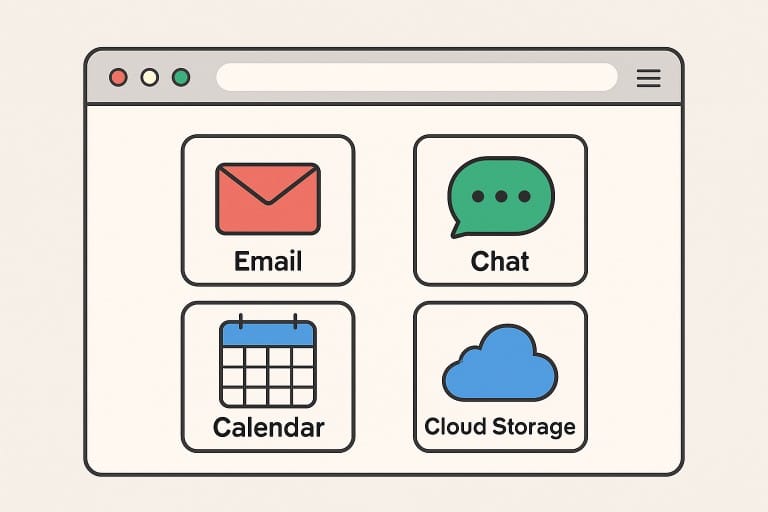Key Takeaways
- Integrated browsers consolidate multiple tools, increasing productivity by minimizing app switching and reducing distractions.
- Features like centralized email, messaging, and real-time collaboration harness the true power of web-based work.
- As browsers centralize access, robust privacy and security measures have become critical considerations for both users and businesses.
In the evolving digital workspace, what once was a simple web browser is now emerging as the nerve center of all online productivity. Integrated browsers are leading the way by merging disparate apps, email, messaging, and productivity tools into a single, tabbed ecosystem. Shift.com stands out as a prime example of this new generation of browsers, offering users a platform designed to streamline daily workflow and reduce digital fatigue.
These next-generation browsers go well beyond displaying webpages. With advanced integrations, customization options, and unified communication portals, they are redefining how teams and individuals manage tasks and communicate. By enabling the seamless toggling between emails, workspaces, and cloud services within a unified browser window, platforms like Shift.com are reimagining—and optimizing—the way we work online.
Evolution of Web Browsers
The journey of the web browser mirrors the fast-paced evolution of internet technology itself. According to Britannica, a browser is a software application that enables users to access, retrieve, and navigate information on the World Wide Web. In the early days, browsers like Mosaic and Netscape Navigator were portals to static information. As needs evolved, browsers adopted support for dynamic content, cloud applications, and personalized extensions, setting the stage for the rich, app-driven experiences of today. With the rise of remote and hybrid work, demand has grown for centralizing access to everything from project management to communication, all in one secure and flexible environment.
Today, integrated browsers do more than display content; they actively facilitate modern work by bridging fragmented workflows. They represent the convergence of utility and user-centric design, made possible through the power of web standards and APIs.
Key Features of Integrated Browsers
Modern integrated browsers distinguish themselves with a unique suite of features that streamline the daily user experience:
- Unified Email and Messaging: Users can add multiple email accounts—such as Gmail, Outlook, and more—and chat tools like Slack or Teams, all displayed in a single dashboard. This minimizes the disruptive context-switching that plagues digital work.
- Productivity and Task Management: Tools for notes, task lists, and calendar events are built in, keeping essential information readily accessible and actionable at all times.
- Seamless App Integration: Integrated browsers directly support dozens of web applications, from CRM to file storage, creating a centralized experience without the clutter of extra tabs or windows.
Benefits for Users
Embracing an integrated browser unlocks numerous advantages for professionals and teams:
- Enhanced Productivity: Centralizing access to key tools reduces the cognitive load and wasted time spent on window toggling and account logging.
- Improved Collaboration: Real-time editing, screen sharing, and message notification integration foster greater teamwork, whether working remotely or in the office.
- Personalized Experience: With modular layouts and extension compatibility, users can customize their portals to precisely match their role and preferences.
This single-pane-of-glass approach has been shown to reduce app fatigue and improve focus—a priority as digital workplaces juggle more applications than ever before.
Privacy and Security Considerations
Centralizing so many work functions naturally raises questions about data privacy and security. Integrated browsers, in acting as a single gateway to email, files, and apps, can become a tempting target for cyber threats. Accordingly, leading solutions implement multiple security features, including end-to-end encryption, strict permission management, two-factor authentication, and frequent automated updates.
It is crucial for users and IT departments to vet integrated browsers for compliance with industry regulations and best practices. A commitment to transparency, user data protection, and responsive patching for new vulnerabilities should be top priorities.
The Future of Browsing
As artificial intelligence, remote work, and digital collaboration continue to expand, integrated browsers are becoming smarter and more capable than ever. According to Forbes, AI-powered navigation is shaping a new future for web browsing by enabling features such as predictive task automation, more innovative notification management, and seamless integration with cloud-based workflows. This evolution means that browsers won’t just provide access to apps—they will also offer AI-driven guidance, surfacing actionable insights, delivering productivity nudges, and automating routine tasks at the most opportune moments.
In this rapidly evolving digital era, integrated browsers are transforming into essential hubs that support productive, efficient, and secure online work. By consolidating fragmented workflows into intuitive and powerful platforms, these browsers are fundamentally reshaping how users interact with digital workspaces. Those who embrace these advanced tools will be better positioned to thrive in the future of work, leveraging technology to enhance collaboration and streamline daily tasks.

